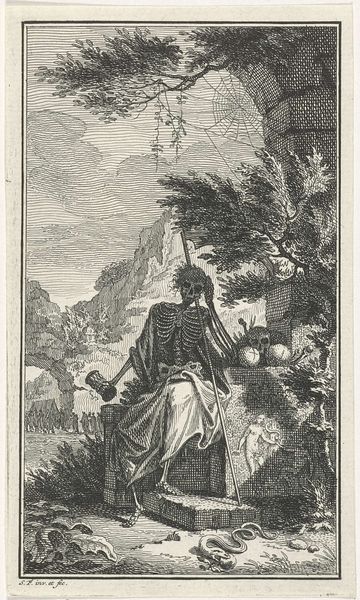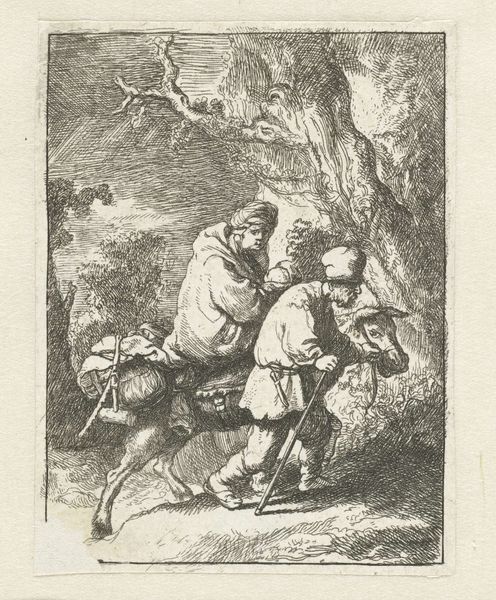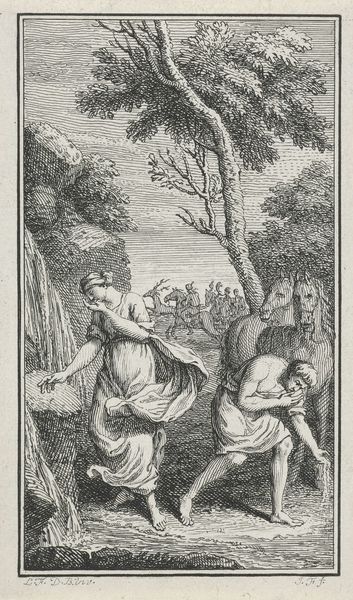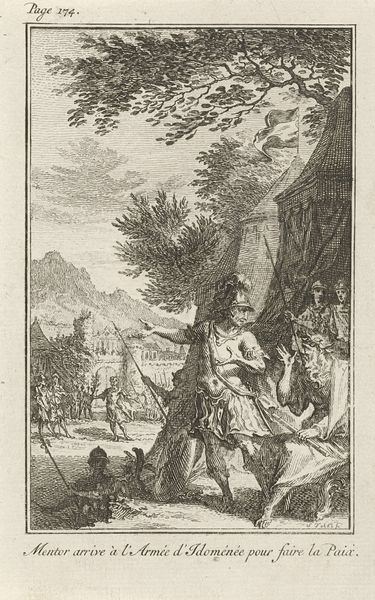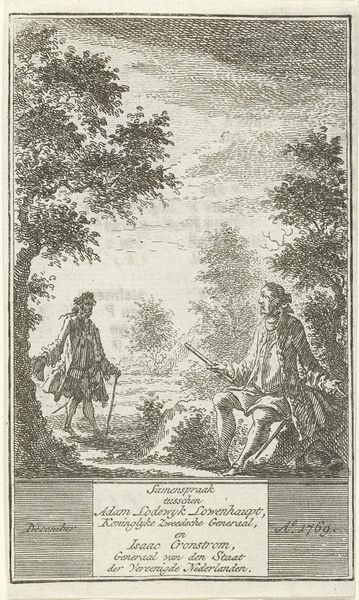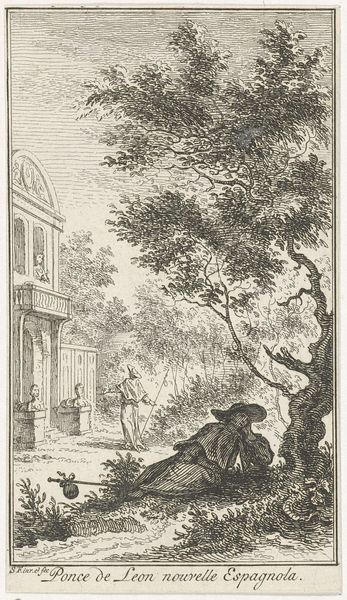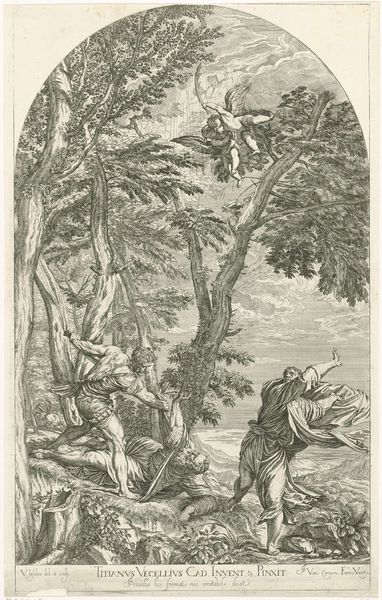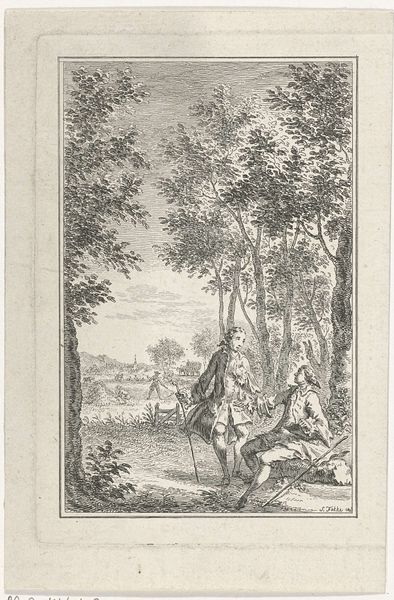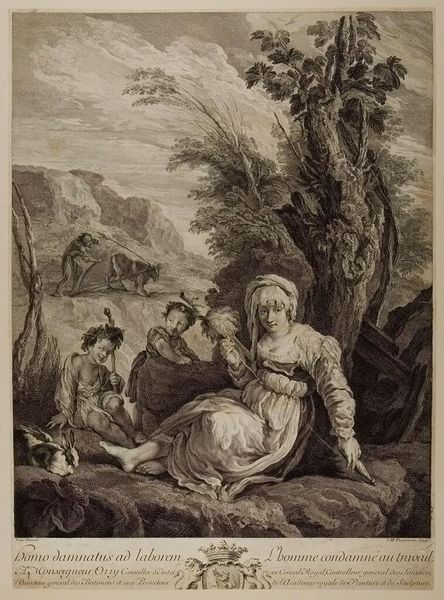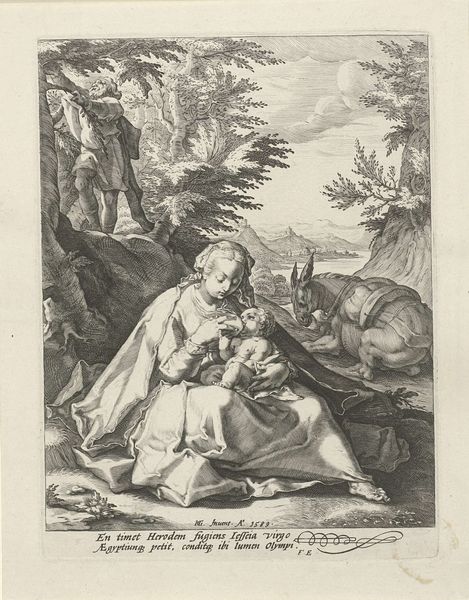
drawing, print, paper, engraving
#
drawing
#
fairy-painting
# print
#
old engraving style
#
landscape
#
paper
#
genre-painting
#
engraving
Dimensions: height 151 mm, width 94 mm
Copyright: Rijks Museum: Open Domain
Editor: This is "Klein Duimpje en de reus met de zevenmijlslaarzen" from between 1754 and 1784, made by Simon Fokke. It's an engraving on paper, housed here at the Rijksmuseum. The composition feels very narrative, like it's pulling a scene directly from a book. What do you see in this piece, especially in terms of its original audience? Curator: Well, considering its origin as a print intended for a wide audience, we can see it reflecting and reinforcing certain societal values. The story of "Little Thumb" or "Tom Thumb" as it is sometimes called, and his clever outwitting of the giant, speaks to the rising merchant class and their aspirations in 18th-century Europe. The print format makes the art accessible. Editor: Accessible, how so? Curator: Its affordability meant it was accessible to a broader section of society beyond the traditional aristocratic art patrons. So the narratives it depicts—cleverness triumphing over brute strength—became part of a shared cultural understanding. Consider also how Fokke chooses to portray the giant... What do you observe? Editor: He's sleeping, vulnerable almost. So the power dynamic shifts through the image itself. Curator: Precisely. The giant is rendered powerless, allowing the diminutive Thumb to succeed, visually implying the possibility for societal change and celebrating cunning intellect, a rising social ideology. Editor: That's fascinating. I never considered how the print medium itself could influence the message. Curator: It’s a testament to how deeply intertwined art is with social and political climates, especially concerning something meant for popular consumption.
Comments
No comments
Be the first to comment and join the conversation on the ultimate creative platform.

